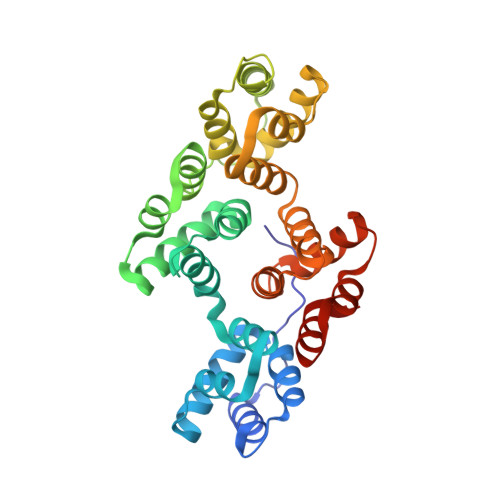The crystal structure of a new high-calcium form of annexin V.
Sopkova, J., Renouard, M., Lewit-Bentley, A.(1993) J Mol Biology 234: 816-825
- PubMed: 8254674
- DOI: https://doi.org/10.1006/jmbi.1993.1627
- Primary Citation of Related Structures:
1ANX - PubMed Abstract:
Annexin V was crystallized in the presence of a high concentration of calcium and the structure refined at 1.9 A resolution. The crystals are triclinic (P1) with three molecules per asymmetric unit and pseudo-R3 symmetry, reflecting a tendency of annexin to form trimers. The overall structure of the protein is similar to that seen in other crystal forms. There are, however, significant changes in domain III, where a new calcium site is formed. The whole region surrounding this site is reorganized in our structure, rendering annexin V more symmetrical and more alike annexin I. The formation of the new calcium site causes the displacement of Trp187 from a buried to an exposed conformation, a change that has recently been demonstrated by fluorescence measurements. The affinity of the different potential calcium sites is modulated: there is no calcium bound in domains II and IV, while up to two secondary calcium ions sites (in domains I and III) can substitute, depending on the calcium concentration present. We suggest that annexin can act as a calcium buffer, binding or releasing calcium depending on its local concentration. Our results also show that annexin displays inherent mobility which, together with its capacity to modulate the calcium affinity of its sites, can be of importance for its function on the membrane surface.
- LURE, Centre Universitaire Paris-Sud, Orsay, France.
Organizational Affiliation:


















